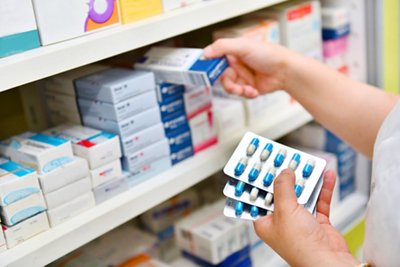Understanding the Pandemic’s Impact on Antibiotic Prescribing and Antimicrobial Resistance
By the bioMérieux Editors | Reading time: 2 min
PUBLICATION DATE: JUNE 14, 2023
The COVID-19 pandemic continues to impact global populations at a large scale. As of April 2023, there have been over 700 million confirmed cases of COVID-19, and nearly 7 million deaths reported to the World Health Organization (WHO).
Since the onset of the COVID-19 pandemic, research and surveillance have been needed to support patient treatment decisions in clinical settings and aid disease mitigation efforts. However, data has not always been readily available, particularly early in the pandemic. Because of the need to move quickly with more severely ill patients, providers have been left to prescribe empirically based on experience and observation, but without helpful surveillance data. Additionally, while empiric therapy is critical for severely ill patients, it can also contribute to the unnecessary use of antibiotics – exacerbating antimicrobial resistance (AMR).
Prescribing and the Prevalence of Bacterial Co-Infection or Secondary Infection
As defined by the WHO, AMR is a natural process that occurs when bacteria, viruses, fungi, and parasites evolve over time and no longer respond to the medicines made to eradicate them. Although AMR is a process that occurs naturally, it is greatly accelerated by the misuse and overuse of antibiotics in humans and animals. With AMR on the rise each year, it poses an immediate and serious threat to public health.
Antibiotics are only used to treat bacterial infections and are not effective against viral infections, including SARS-CoV-2. Many studies suggest that the frequent use of antibiotics during the COVID-19 pandemic has greatly impacted AMR, especially in the early phases of the pandemic where antibiotics were even more widely prescribed. Many COVID-19 patients who received antibiotics have been suspected of presenting with a bacterial co-infection or secondary infection. It is important to note however, that “based on clinical presentation, it is difficult to distinguish between a bacterial and a viral pulmonary infection.”
According to a study published by The Lancet, presence of bacterial co-infections and secondary bacterial infections among patients with COVID-19 is generally around 5.3% and 18.4%, respectively. Despite a low prevalence of co-infection and secondary infection, antibiotic use is high, at an estimated 50-75%. The study also notes that among COVID-19 patients with bacterial infections, a staggering 60.8% were resistant to antimicrobials.
This data further emphasizes the need to reduce antimicrobial overuse and to better understand the impact COVID-19 has had on AMR. Emerging evidence suggests that surges in COVID-19-related hospital admissions are associated with an increase in antibiotic resistant infections, including methicillin-resistant Staphylococcus aureus (MRSA) and vancomycin-resistant Enterococcus (VRE).
The Role of Diagnostics in Reducing Antimicrobial Overuse
Diagnostics are critically important in mitigating infectious diseases and in reducing antibiotic overuse. They have also proven to be crucial to the COVID-19 pandemic response. Diagnostic tests can be used to help clinicians distinguish between bacterial and viral infections and identify causative pathogens, which supports decision-making for whether to use antibiotics, and for antibiotic selection. Better prescribing not only helps to lessen the burden of AMR, but it also aids in providing optimal patient care.
As emphasized by the Centers for Disease Control and Prevention (CDC), “setbacks to fighting antimicrobial resistance can and must be temporary.” Everyone has a role to play in the fight against AMR. The WHO reminds the public to:
- Only use antibiotics when prescribed by a certified health professional.
- Never demand antibiotics if your health worker says you don’t need them.
- Always follow your health worker’s advice when using antibiotics.
- Never share or use leftover antibiotics.
- Prevent infections by regularly washing hands, avoiding close contact with sick people, practicing safer sex, and keeping vaccinations up to date.
- Prepare food hygienically, following the WHO Five Keys to Safer Food and choose foods that have been produced without the use of antibiotics for growth promotion or disease prevention in healthy animals.
Opinions expressed in this article are not necessarily those of bioMérieux.
You may be interested in these articles
SHARE THIS:
- AMR AMS
< SWIPE FOR MORE ARTICLES >

-2?qlt=85&ts=1687162768018&dpr=off)
